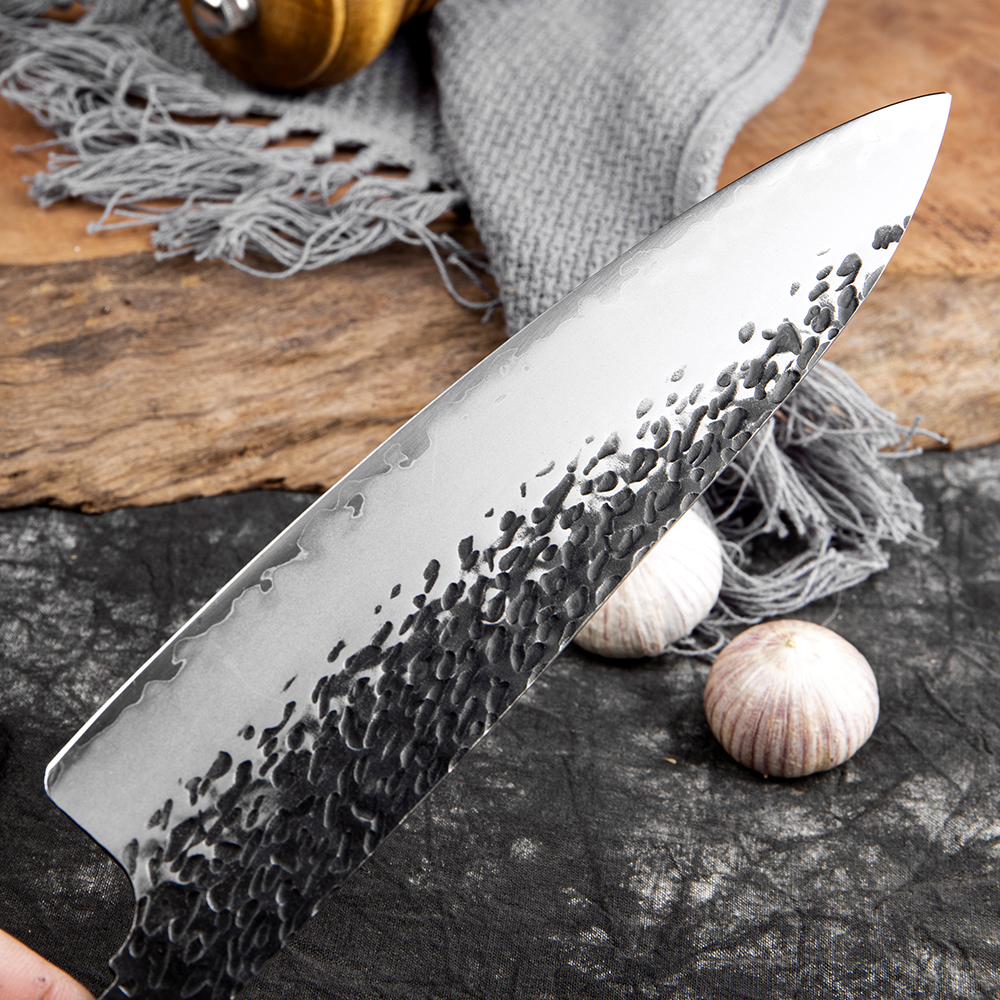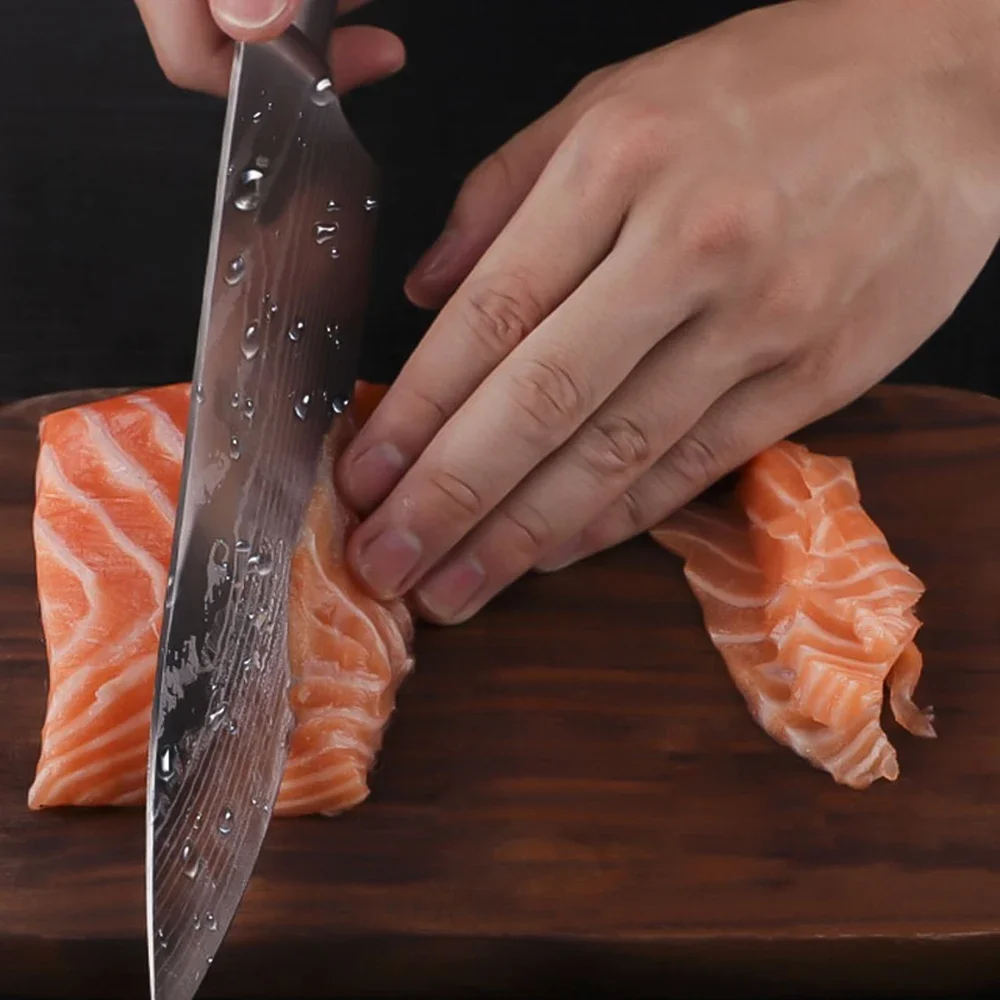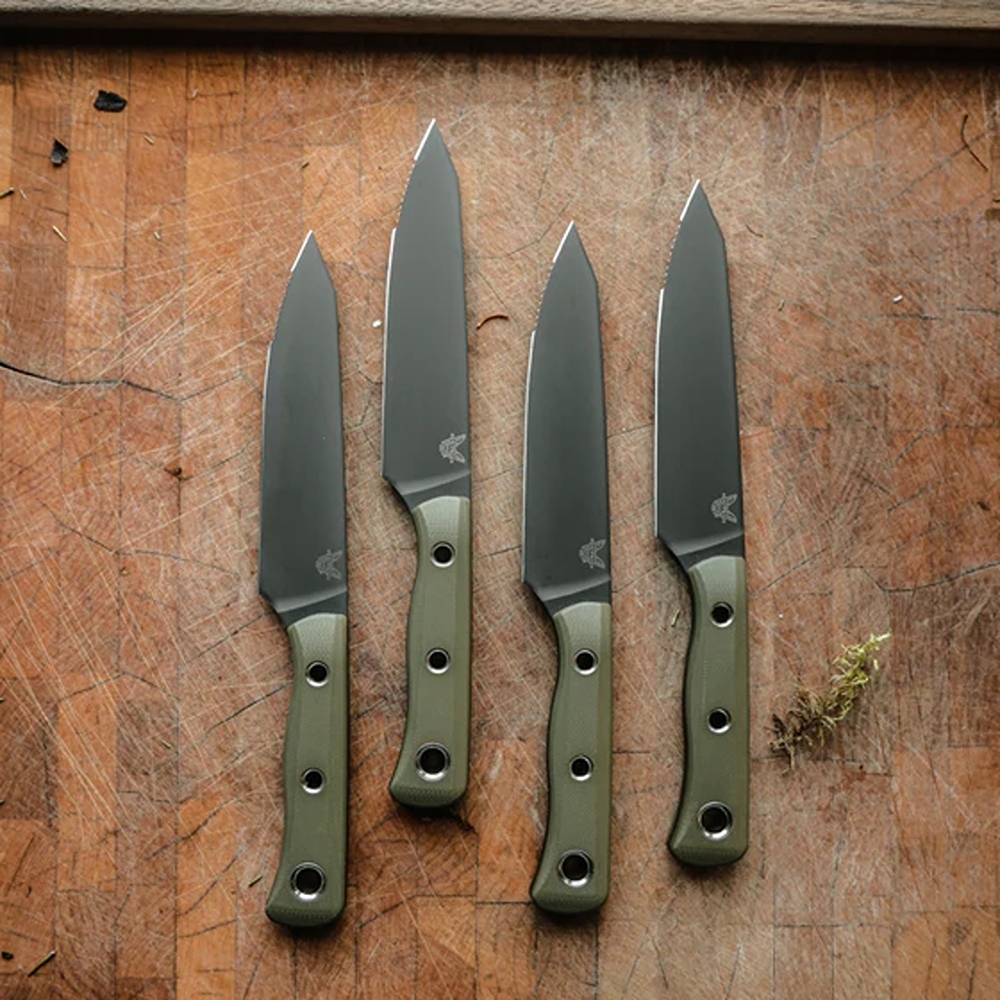The Must-Have Kitchen Knife Types
Every well-equipped kitchen needs different kinds of kitchen knives to handle different tasks efficiently. Here’s a list of must-have knives for any cook.
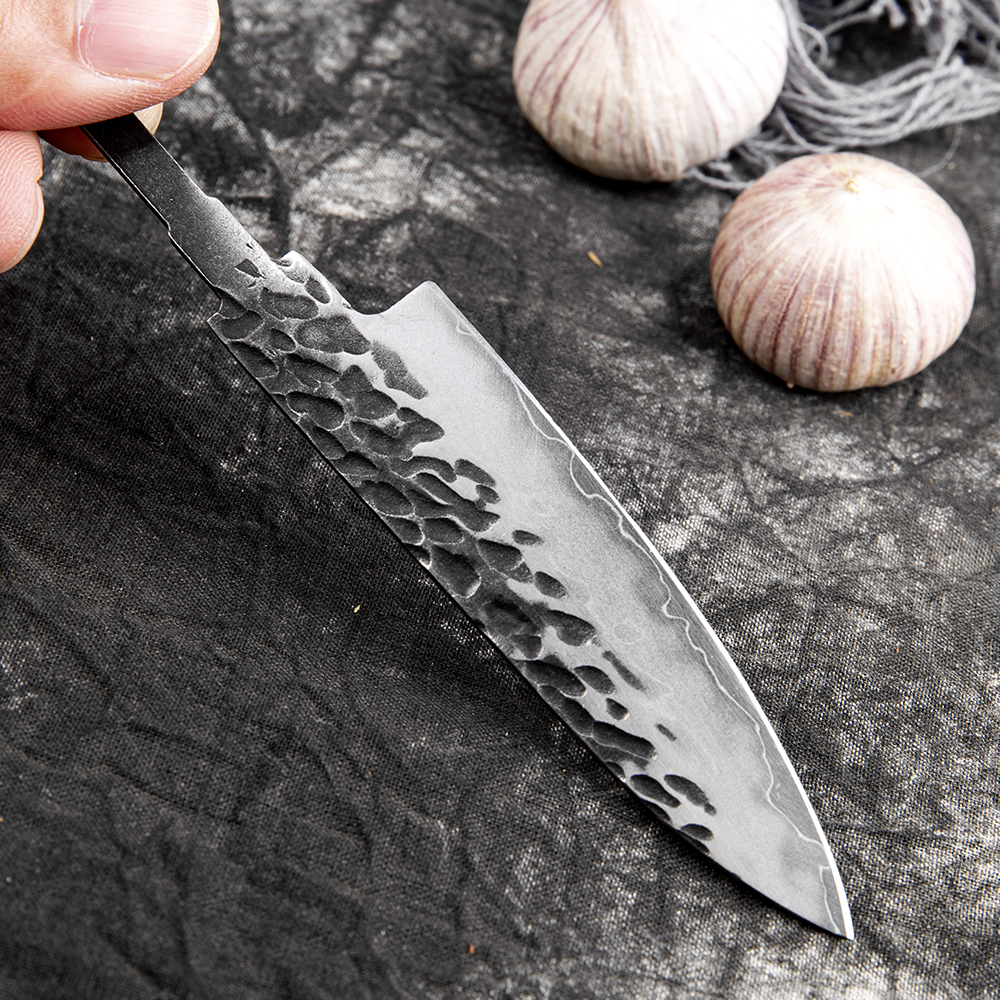
Chef’s Knife: The Versatile Workhorse
Indispensable in any kitchen, the chef’s knife has a broad and sharp blade ideal for chopping, mincing, and slicing a variety of foods.
Paring Knife: Perfect for Precision Tasks
The smaller paring knife is excellent for peeling, trimming, and detailed cutting tasks where control is essential.
Bread Knife: The Serrated Essential
A bread knife has a long, serrated blade for slicing through crusty loaves and delicate pastries without crushing.
Utility Knife: The In-Betweener
Utility knives are great for tasks too small for a chef’s knife but too large for a paring knife, like slicing fruits and veggies.
Santoku Knife: The Japanese All-Rounder
With its flat edge and rounded tip, the santoku knife excels at slicing, dicing, and mincing, offering precision with each cut.
Boning Knife: For Meat and Poultry Precision
Designed with a narrow blade, the boning knife makes removing meat from bones and trimming fat a breeze.
Carving Knife: Roasts and Hams’s Best Friend
A carving knife has a long, thin blade for making clean cuts and elegant slices of cooked meats, hams, and poultry.
Fillet Knife: Ideal for Delicate Fish Jobs
The fillet knife, with its flexible and thin blade, is perfect for filleting fish neatly and effortlessly.
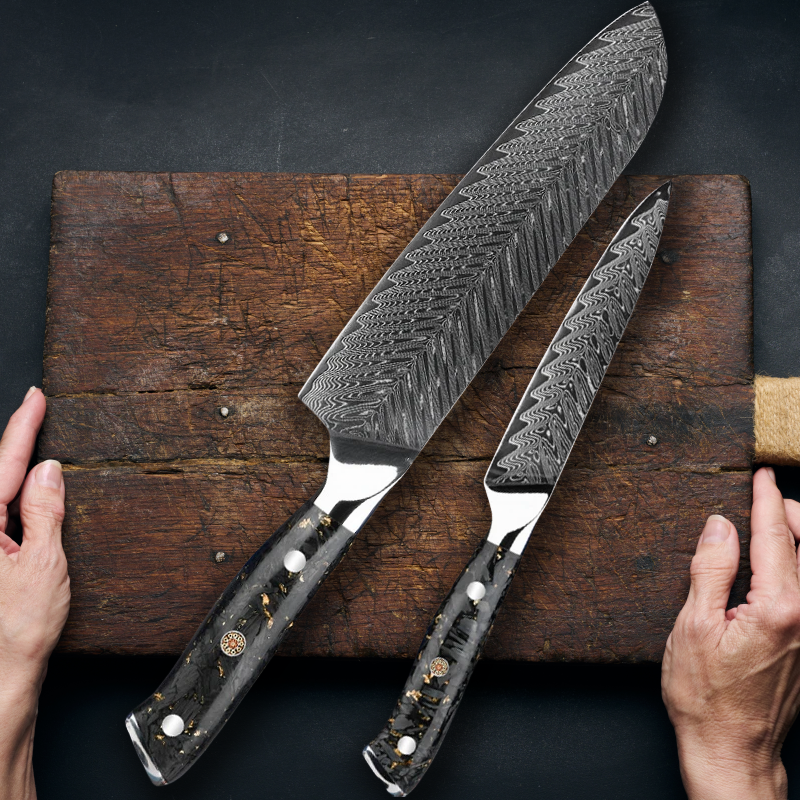
Cleaver: Heavy-Duty Chopping Power
For bigger tasks like chopping through bones and tough vegetables, a sturdy cleaver is the go-to knife.
Specialized Kitchen Knives Worth Considering
In addition to the different kinds of kitchen knives, there are different kinds of kitchen knives that can enhance your cooking experience. These specialized blades cater to specific tasks, making certain cutting jobs easier and more efficient.
Cheese Knives: Design Meets Function
Cheese knives come in various shapes, each crafted for different types of cheese. The holes in some blades prevent soft cheeses from sticking. For hard cheeses, sturdy, solid blades are more suitable. A forked tip may serve for easy serving.
Nakiri/Usuba Knife: Vegetable Cutting Experts
The Nakiri and Usuba knives are Japanese designs, ideal for chopping vegetables. Nakiri knives have a straight blade, perfect for making clean cuts without rocking the knife. Usuba knives are single-bevel and excel in precision cutting tasks.
Serrated Utility Knives: Beyond Bread Slicing
Not just for bread, serrated utility knives handle delicate foods like tomatoes with ease. Their saw-like blades can tackle food with tough exteriors and soft interiors, preserving texture and shape.
Understanding Knife Materials and Maintenance
Choosing the right material for your kitchen knives is crucial for their performance and longevity. Let’s explore the common materials and how to maintain them.
Stainless Steel versus Carbon Steel
In the realm of kitchen cutlery, stainless steel and carbon steel are popular choices. Stainless steel knives resist rust and are easier to maintain, making them ideal for the casual cook. However, carbon steel knives, while requiring more care to prevent rusting, hold an edge longer and sharpen more easily, thus favored by serious chefs and knife enthusiasts.
High-Carbon Stainless Steel: The Best of Both Worlds
High-carbon stainless steel is a hybrid of the two, offering the rust resistance of stainless with the durability and edge retention of carbon steel. This makes knives made of high-carbon stainless steel an excellent investment for both professional and home kitchens.
Caring for Your Knives: Sharpening and Storage
Proper maintenance is key to the performance of your knives. Regular sharpening keeps blades at peak sharpness, while safe storage—such as in a knife block or on a magnetic strip—prevents damage to the blades. Wash knives by hand to preserve their edges and dry immediately to avoid corrosion. Practicing these care techniques will extend the life of your knives and enhance your cooking experience.
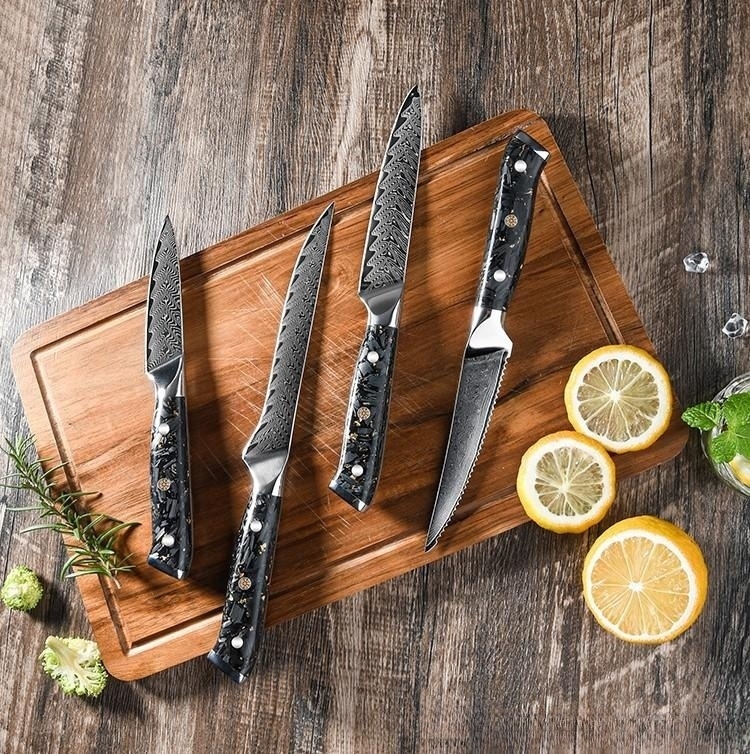
Knife Handling and Safety Tips
Good knife skills keep you safe and make cooking easier. Here’s how to handle knives properly.
The Importance of Proper Grip and Technique
A proper grip improves control and precision when cutting. Hold the knife handle with your dominant hand, using your thumb and forefinger to grip the blade’s base. This ‘pinch grip’ offers stability and better control, minimizing slippage and uneven cuts. Practice this method to chop, dice, and slice with confidence.
Preventing Accidents: Choosing the Right Knife for the Job
Using the right knife for each task is vital for safety and ease. Each knife is designed for specific jobs. Don’t use a bread knife for chopping vegetables or a chef’s knife to peel fruit. Match the task with the correct knife to reduce the risk of accidents. Keep knives sharp; dull blades can slip and cause injury. Lastly, focus on your cutting and keep distractions away. Safety first ensures enjoyable cooking every time.
Building Your Knife Collection
Building a versatile and functional knife collection doesn’t happen overnight. It’s a process that involves understanding what essentials you need, learning when to branch out into more specialized tools, and making savvy purchases that won’t break the bank. Let’s dive into how you can build up your collection from the basics to a more comprehensive set.
Starting With the Essentials
Start with the basics: a chef’s knife, paring knife, bread knife, and utility knife. These cover most kitchen tasks. A chef’s knife handles chopping tasks. A paring knife is for small, precise work, and a bread knife glides through crusty loaves. The utility knife fills in the gaps for miscellaneous cutting tasks.
Expanding Your Set: When to Invest in Specialty Knives
Once you’re comfortable with the basics, consider specialty knives. A Santoku knife provides precision for cutting vegetables, while a fillet knife is essential for delicate fish. A carving knife makes slicing roasts a breeze. Assess your cooking habits to decide which specialty knives you’ll use most.
Balancing Quality with Budget: What to Look for When Purchasing Knives
When buying knives, look for a comfortable grip, good balance, and rust-resistant material like high-carbon stainless steel. Do your research, read reviews, and don’t rush. Balance the cost with how often you’ll use the knife. Remember, a higher price doesn’t always mean better quality.
Advancements in Knife Technology
Technological improvements have revolutionized kitchen cutlery, enhancing performance and users’ cooking experience.
The Rise of Ceramic Knives and Their Uses
Ceramic knives have gained popularity for being lightweight and extremely sharp. Made from zirconium oxide, these knives are known for keeping their edge up to ten times longer than traditional steel blades, making them a favorite for precision cutting tasks. They do not corrode, are non-magnetic, and are resistant to acidic substances, which helps in preventing flavor transfer between food items. Ideal for slicing fruits, vegetables, and boneless meats, ceramic knives demand careful handling due to their brittleness – they may chip or break if used on hard or frozen foods or dropped on hard surfaces.
Innovations in Knife Design: Ergonomics and Blade Material
Modern knife design now focuses heavily on ergonomics, with handles shaped to fit comfortably in the hand, reducing user fatigue and increasing control over cutting tasks. Advances in metallurgy have produced blades with enhanced edge retention, resistance to corrosion, and decreased need for sharpening. Some knives feature ‘full tang’ design, where the blade extends through the handle, providing better balance and durability. Innovations also include the use of high-carbon stainless steel that offers the resilience of carbon steel minus the susceptibility to rust, and powdered steels that result in an extraordinarily sharp edge. These advancements make different kinds of kitchen knives not only more practical but also a pleasure to work with.
